Tasting the 2011 vintage of Waterford Estate’s premium red blend The Jem with Mark Le Roux, winemaker, prefaced by some musings over what makes the ‘perfect’ modern winery.
If you were designing the perfect modern winery from scratch, chances are you’d be ending up building something that looks pretty close to Waterford Estate.
The first thing you’d need to do is pick the area of a country that can grow exceptional grapes. This bit is more or less mandatory.
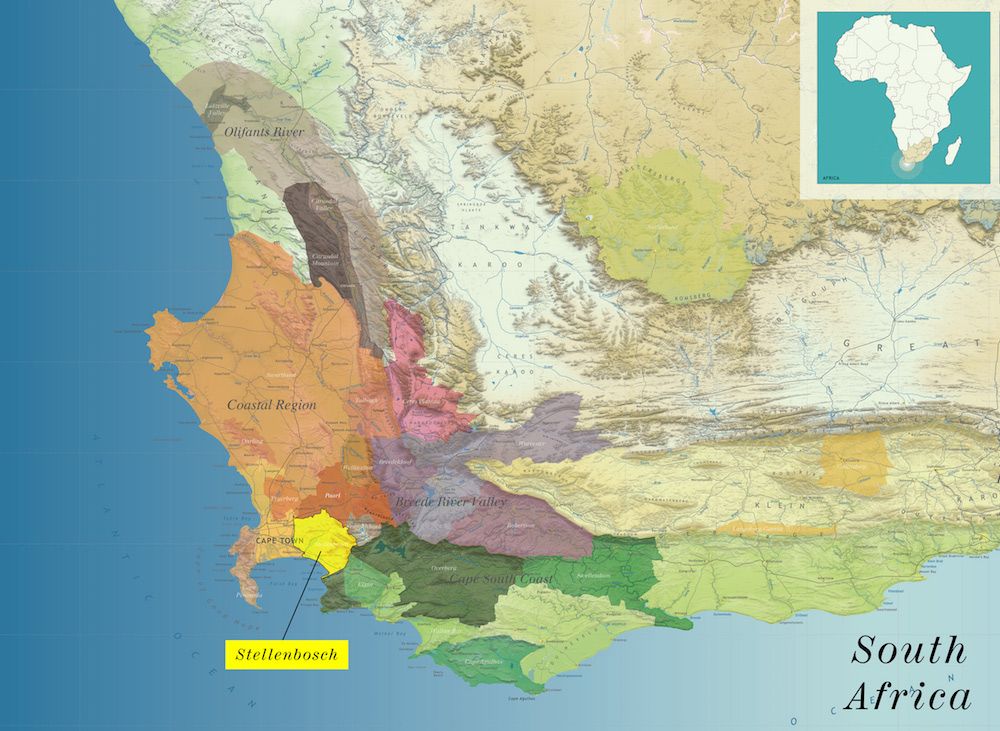
50 hectares should be enough to start with, in a country that guarantees reliably long ripening times, say South Africa.
It would be really handy if, when you bought the land, you acquired a patch of some really old vines that are already planted and making quality wine. If they are bush vines, then maybe you can take the afternoon off.
It would an added bonus to have a mountain behind the winery to do ‘something or other’ to the climate but mainly to look spectacular on all the pictures that will grace the coffee table books sold in the gift shop.
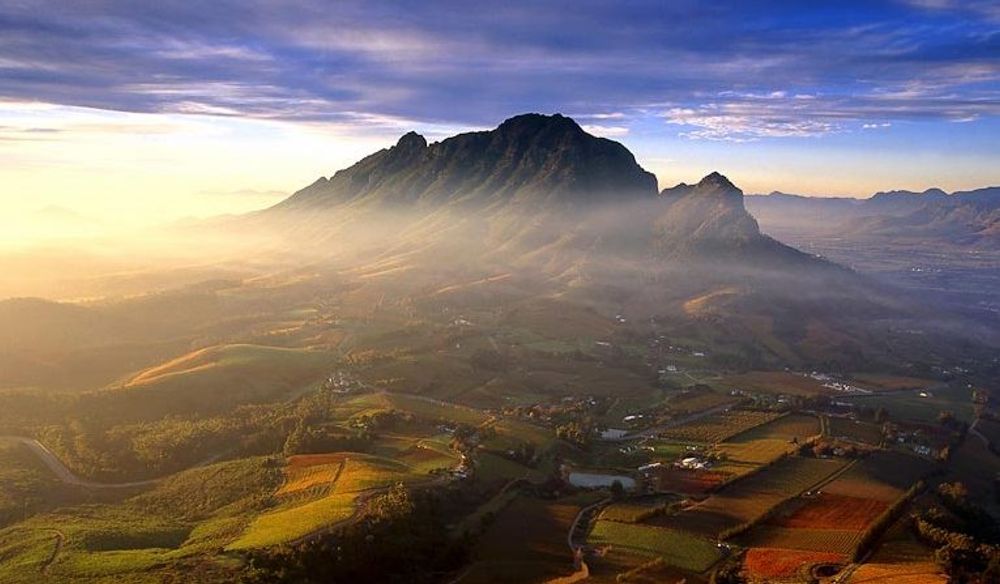
And, of course, the mountain would come in handy when visitors drive up an impossibly gorgeous drive (‘Fuck off’ gates optional).
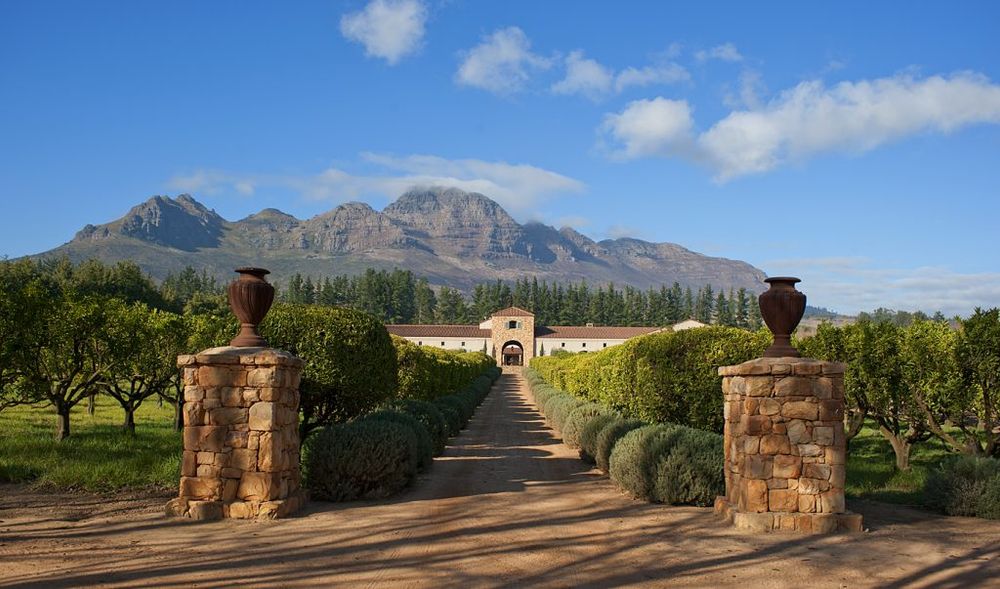
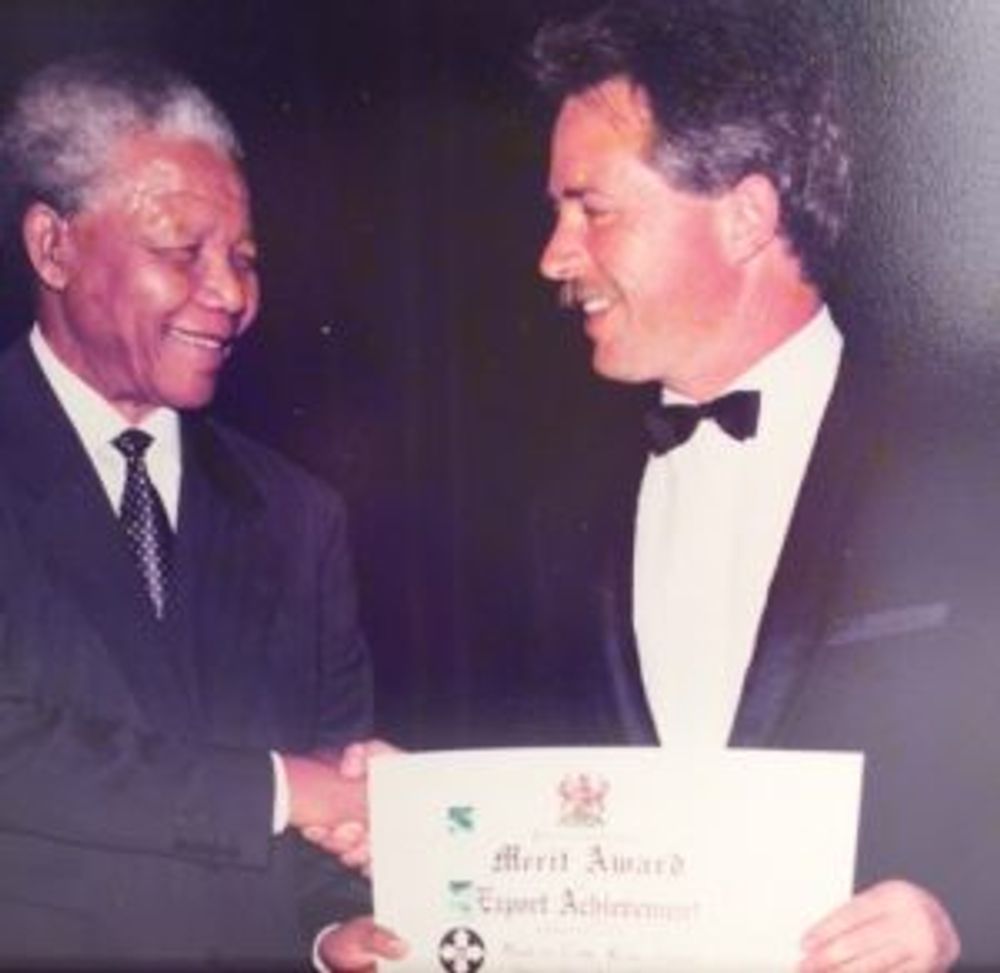
Kevin Arnold (he’s the one on the right)
You’d employ a winemaking legend – Kevin Arnold, he’ll do – to ensure that all the important bits are done in the vineyards.
He would also have to know his way around the newly-built, all-mod-cons, no-expenses-spared winery, and the barrel room that houses an unfeasibly large amount of wine and will become an integral part of the winery tour.
Because you’re ambitious you’ll also need to employ a young buck winemaker to ensure growth and continuity.

Mark Le Roux
It’d be an added bonus if he was young, cool-looking and didn’t mind doing photo shoots – T-shirt kind of thing.
Let’s get this chap Mark Le Roux. Went to Uni. in SA, trained at some good places. Can make quality wine.
Both of these winemakers would need to look sickeningly healthy.
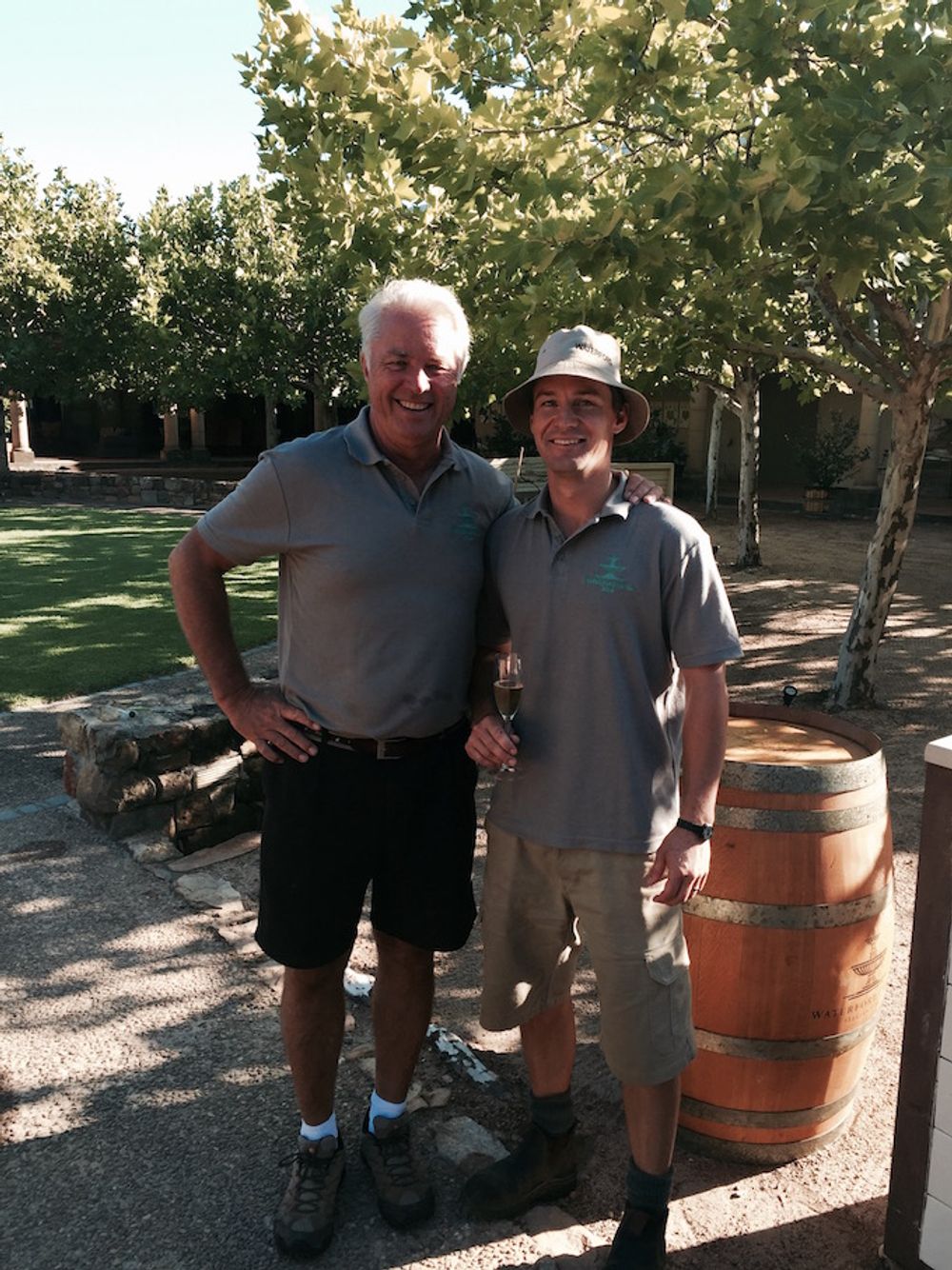
Kevin Arnold just about to explain the rules to Mark Le Roux about drinking on the job
And smile a lot.
You’d plant grapes that fit with your own and your winemakers’ philosophies.
You’d farm responsibly – maybe not go biodynamic at first (you don’t want to go the whole cow horn and dung straight away let’s see what the climate really does first), but certainly you’d want to farm sustainably and ethically.
There must be a few more things… wine? name? logo?
Then you’d have to plan your wine portfolio.
You’d need a pretty big range of wines:
- entry level (blends most likely) named after something on-site – a stream or that mountain maybe?
- a generic brand to take the single varietals/vineyards wines and wines that don’t fit in
- an uber-premium wine – gets reviewed by top critics and has a halo effect on the rest of the portfolio
- and a ‘Collection’ range of classy one-offs.
Most or some of these will be named after real people – wives or children. Pets too much? A tractor maybe? Scratch that, that’s plain daft, who’d do that?
As for the name of this winery it would need to be original but not too original. Don’t want it to be too wacky like some of those New Zealand or Australian wineries God forbid. And we need people to pronounce it – not like André’s place up the road, no-one can pronounce that!
So how about Waterford perhaps? Sounds pretty classy.
And we’ll need a logo.
It would be brilliant if this was an original feature left from centuries ago (fossils are always a winner) or if not then something antique. Angelus has got bells right? Jadot a gargoyle.
Look, as we’re building this place from scratch we can use anything we want – an old tree, a gate… how about a fountain? that fits in with the brand name and vision.
And looks great on a label.
So OK, what else would you need if you were building the perfect modern winery from scratch.
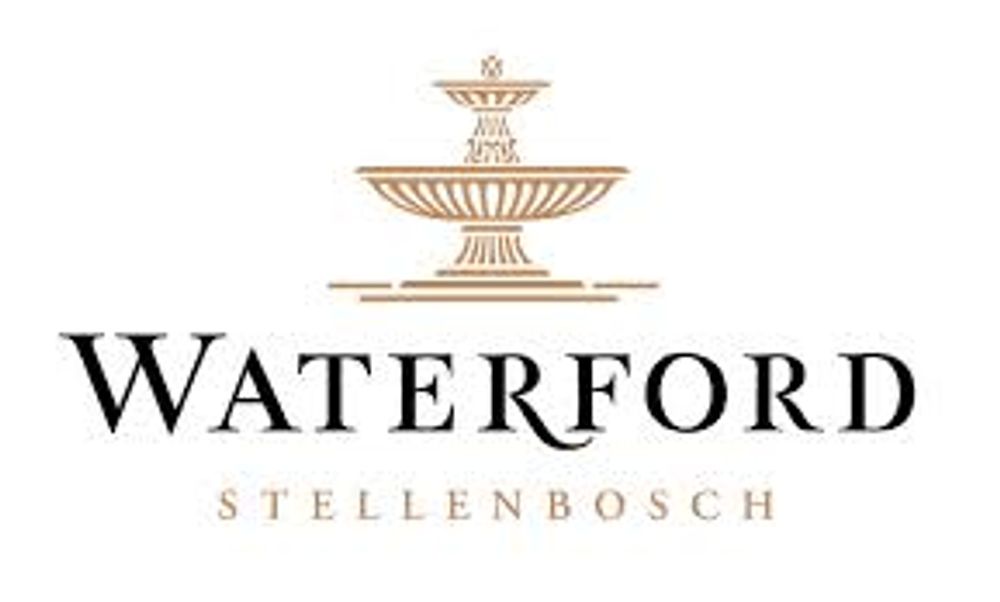
Oh yes. Shed loads of dosh.
You’d either need to be totally loaded, or at least be on pretty familiar terms with your bank manager.
It would also help if you were quite organised and could ‘make things happen’.
So there you have it, how to build the perfect wine estate, although I dare say I have missed out the bit about blood, sweat and tears.
Which brings us neatly back to how Waterford Estate came about
So this is pretty much the story of how Jeremy Ord, executive chairman of Dimension Data, made Waterford Estate in the Helderberg area of Stellenbosch with winemaker Kevin Arnold.
They bought the land from Stellenrust in 1998, farmed it whilst building the modern estate and opened it as Waterford Winery in 2000 with the name change to Waterford Estate a few years later.

Now none of this would make any kind of sense unless the wines were of good quality, which they are. This is hardly surprising when the winemaking team you’ve employed is Kevin Arnold whose reputation is already international, and Mark le Roux who is becoming so.
As the winemaker at Waterford, Mark Le Roux has some big tracks to follow in the shape of South African legend Kevin Arnold.
Arnold made his reputation primarily through Delheim and Rust en Vrede before setting up Waterford Estate with Ord, where his eponymous Shiraz is a consistent heavy-hitter at the crease.
So how about the 2011 The Jem? How was that tasting?
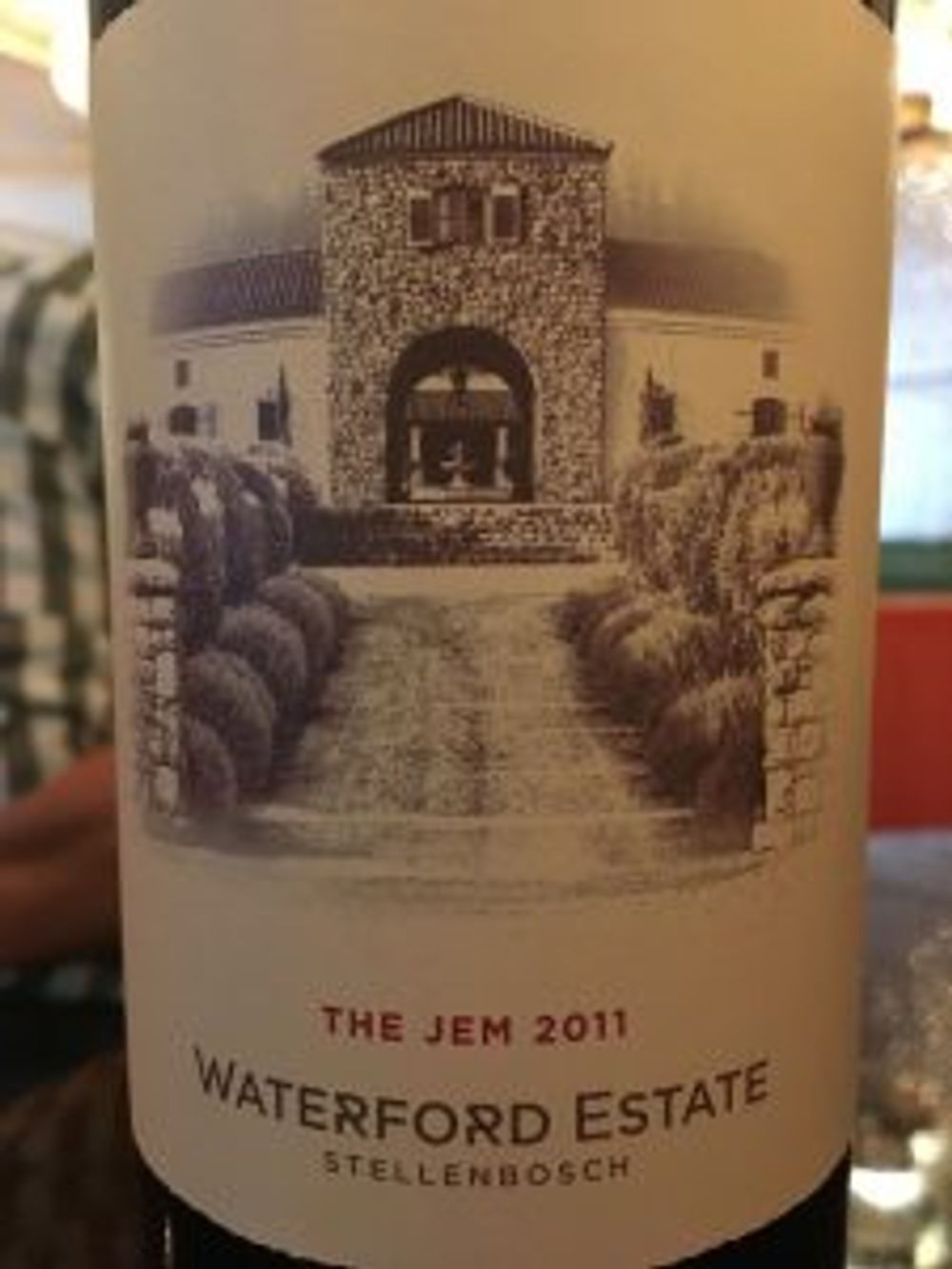
One of the trademarks of the Kevin Arnold Shiraz and the wine’s flagship wine The Jem (named after Ord, not a tractor) is that there is plenty of dark fruit as you’d expect but great balance so the fruit is not heavy-handed or over-extracted.
The Jem is the kind of wine to drink with a leg of wild boar or haunch of venison with an open fire crackling nearby and frosted window panes.
My tasting notes had it being very dark, complex, with black fruit, liquorice, tar and cedar wood. The wine has an enjoyable, mouth feel that is full but at the same time as being elegant, medium-bodied and almost restrained.
It is primarily a Cabernet/ Shiraz blend, although the percentages of both vary wildly from year to year as do the six, yes count them, six, other varietals. On the one hand this is a masterclass in blending and on the other hand a wine made up of arguably too many parts. I was reminded here of the white Californian wine Conundrum that has a similarly large number of varietals and tasting it also requires some ‘deciphering’.
As for the blend components of The Jem these vary from the 2007 having 60% Cabernet Sauvignon to 39% in the 2010 and 45% in the 2011. Where the 2010 has Malbec and Grenache in the mix, the 2011 replaces those with Petit Verdot and Sangiovese.
It certainly looks and feels like blending with a large number of components is a trademark of the estate’s winemaking style.
Its entry level wine, Pecan Stream Pebble Hill could have been called Esperanto, it has so many different European varietals in it –Sangiovese, Tempranillo, Merlot, Mourvedre and Shiraz no less.

The estate’s blueprint seems to have taken this into account.
From an aerial perspective Waterford looks like a patchwork quilt of different vineyards or maybe an artist’s palate, allowing winemakers Arnold and Le Roux (sounds like a legal firm) to grow a range of grapes to make their blends with, and also their single varietals and single vineyard wines.
The bulk of the estate’s 50 hectares is made up of Cabernet Sauvignon, Shiraz and Chardonnay but there are additional plots of Sauvignon Blanc, Sangiovese, Tempranillo, Merlot, Cabernet Franc, Petit Verdot, Barbera, Malbec, Grenache and Mourvedre in varying sizes.
Of the other wines tasted with Le Roux, the Waterford Pinot Noir, and the Cabernet Sauvignon and Chardonnay both on the Waterford Estate label were all very good to exceptional, in the case of the old-vine Chardonnay.
I am also hoping that a sparkler (50/50 Chardonnay and Pinot Noir) which was tasted and is as yet unreleased will see the light of day, as that was also of a very high standard.
Waterford’s wines are imported into the UK by Fields, Morris & Verdin









































